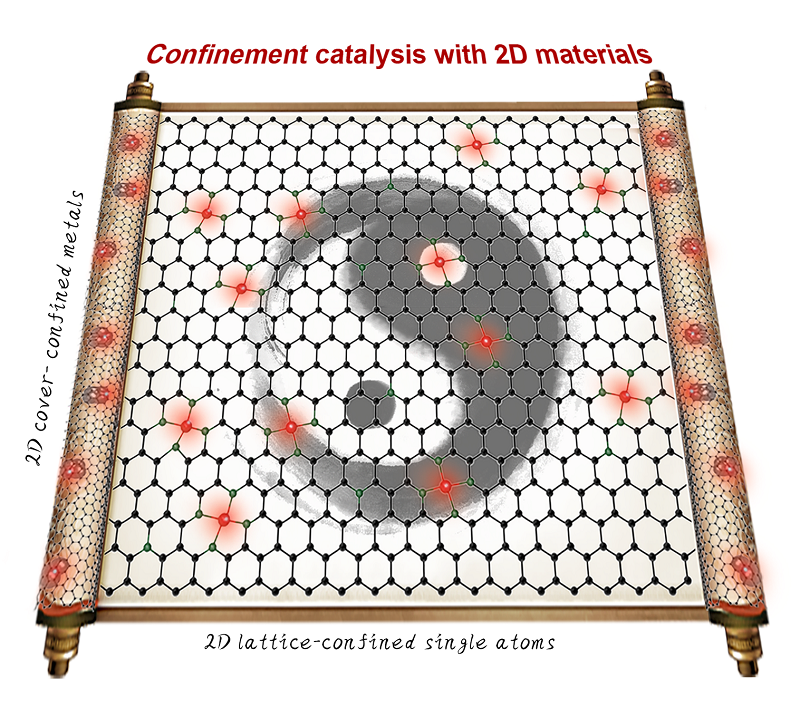Recently, the research team of Prof. Dehui Deng and Prof. Xinhe Bao in the State Key Laboratory of Catalysis was invited to publish a progress report entitled “Confinement Catalysis with 2D Materials for Energy Conversion” in Advanced Materials (DOI: 10.1002/adma.201901996).

The unique electronic and structural properties of 2D materials have triggered wide research interest in catalysis. The lattice of 2D materials and the interface between 2D covers and other substrates provide intriguing confinement environments for active sites, which has stimulated a rising area of “confinement catalysis with 2D materials.” Fundamental understanding of confinement catalysis with 2D materials will favor the rational design of high-performance 2D nanocatalysts. Confinement catalysis with 2D materials has found extensive applications in energy-related reaction processes, especially in the conversion of small energy-related molecules such as H2, O2, CH4, CO, CO2, H2O, and CH3OH. Two representative strategies, i.e., 2D lattice-confined single atoms and 2D cover-confined metals, have been applied to construct 2D confinement catalytic systems with superior catalytic activity and stability. Herein, the recent advances in the design, applications, and structure–performance analysis of two 2D confinement catalytic systems are summarized. The different routes for tuning the electronic states of 2D confinement catalysts are highlighted and perspectives on confinement catalysis with 2D materials toward energy conversion and utilization in the future are provided.
The research team of Prof. Dehui Deng and Prof. Xinhe Bao has accomplished several pioneered work and successfully developed different 2D catalytic systems in energy conversion over past a few years. As representative researches, a series of 2D lattice-confined single atoms catalysts have been developed for energy conversion (Chem. Mater. 2011, 23, 1188, Energy Environ. Sci. 2015, 8, 1594, Nat. Nanotechnol. 2016, 11, 218, Sci. Adv. 2015, 1, e1500462). In addition, for the first time, a series of 2D cover encapsulating metal catalysts have been synthesized (proposed as “chainmail catalysts”), which has exhibited inimitable advantages toward catalysis under harsh conditions (Angew. Chem. Int. Ed. 2013, 52, 371, Angew. Chem. Int. Ed. 2015, 54, 2100, Energy Environ. Sci. 2016, 9, 123).
These works are supported by Ministry of Science and Technology of China, Major Project of National Natural Science Foundation of China, Key Research Program of Frontier Sciences of the Chinese Academy of Sciences, and Collaborative Innovation Center of Chemistry for Energy Materials (2011. iChEM), etc. This work is dedicated to the 70th anniversary of Dalian Institute of Chemical Physics, CAS. (Text/Image by Lei Tang and Hehua Gao )
Link:http://www.dicp.cas.cn/xwdt/kyjz/201908/t20190816_5361143.html